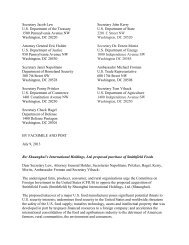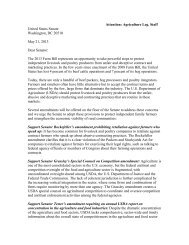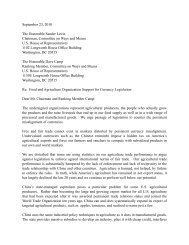Exhibit 8, 100416 Brazil FMD Risk Evaluation - R-Calf
Exhibit 8, 100416 Brazil FMD Risk Evaluation - R-Calf
Exhibit 8, 100416 Brazil FMD Risk Evaluation - R-Calf
Create successful ePaper yourself
Turn your PDF publications into a flip-book with our unique Google optimized e-Paper software.
Animal gathering points<br />
In Santa Catarina, CIDASC inspects most fairs, exhibitions, and events where animals are gathered.<br />
In 2005 and 2006 there were 162 such events, involving 83,449 bovines and 2,949 small ruminants<br />
(Table 8). All animals are inspected and have their health documents checked on arrival by a<br />
representative of the official veterinary service. The representative is present during the entire event<br />
[4].<br />
Table 8. Animal gathering events involving <strong>FMD</strong>-susceptible animals inspected by CIDASC in<br />
Santa Catarina, 2005 and 2006 [4].<br />
Animal gathering events (auctions, fairs, etc.) involving <strong>FMD</strong>susceptible<br />
Year<br />
animals<br />
2005 2006<br />
Total events inspected by CIDASC 61 101<br />
Total cattle at the events 46,277 37,222<br />
Total sheep and goats at the events 1,790 1,159<br />
Conclusions:<br />
The livestock industry in Santa Catarina appears to be well organized and knowledgeable of<br />
necessary biosecurity precautions. APHIS finds that different controls and biosecurity measures at<br />
commercial swine farms effectively mitigate introduction and spread of the diseases under<br />
evaluation. The slaughter inspection system is robust. Animal identification systems are<br />
comprehensive and allow officials to trace the movement of cattle and swine within Santa Catarina.<br />
Further, APHIS concludes that Santa Catarina has adequate control of inspection activities within<br />
integrated production systems, animal concentration points, and slaughter plants.<br />
9. Disease surveillance in the region<br />
Documenting surveillance systems that ensure early detection of the diseases under consideration is<br />
essential for the risk assessment. This section explains the characteristics of the <strong>FMD</strong>, CSF, SVD,<br />
and ASF surveillance programs in Santa Catarina.<br />
<strong>FMD</strong><br />
<strong>Brazil</strong> employs both passive and active surveillance strategies designed to demonstrate freedom from<br />
<strong>FMD</strong>. The strategies’ emphases differ depending on the phase of the eradication process within a<br />
given State or zone. During the first phase, the zone demonstrates its freedom from disease. The<br />
second phase consists of monitoring of the zone. The second phase begins once the zone is free<br />
from infection and is recognized as free of <strong>FMD</strong> by the OIE, either with or without vaccination<br />
(Santa Catarina is recognized as free without vaccination). The primary goal of the first phase is to<br />
document freedom from disease while the second phase prevents the reintroduction of the disease,<br />
maintains good sanitary conditions, and provides technical grounds to demonstrate the continual<br />
absence of disease and viral activity in the zone.<br />
APHIS <strong>Evaluation</strong> of the Status of the <strong>Brazil</strong>ian State of Santa Catarina 47











